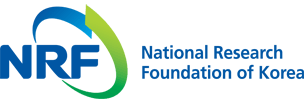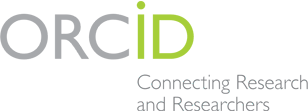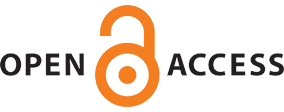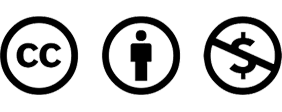Original Article
Abstract
References
Information
Purpose: The purpose of this study is to derive measures to reduce fire damage to logistics facilities adjacent to forests caused by rapidly increasing forest fires. Method: In order to achieve this research objective, we investigated fire safety standards in areas adjacent to forests overseas and based on this, proposed countermeasures that can be applied domestically. Result: Overseas, the concept of Wildland Urban Interface (WUI) has been introduced to establish evaluation methods and tools for fire risk in areas where forests and buildings are combined, and not only the structural performance of the building (fire protection, fire resistance, and damage resistance), but also the weather conditions around the building. The risk is assessed and countermeasures are presented in accordance with six conditions, including site conditions and the type of combustibles placed around the building. Conclusion: It is necessary to establish forest adjacency standards for logistics facilities, and it is necessary to apply building materials that exceed the standards stipulated in the law in Korea. Logistics facilities located in areas adjacent to forests are required to collect information and minimize damage from fire spread. It is believed that it is necessary to develop a tool that can quantitatively determine the level of risk.
연구목적: 본 연구는 급격히 증가하는 산불로 인한 산림에 인접한 물류시설의 화재 피해를 저감하기 위한 방안을 도출하는 것을 목적으로 한다. 연구방법: 이러한 연구목적을 달성하기 위해서 국외 산림-도시 인접지역의 화재안전기준을 조사하고 이를 바탕으로 국내에 적용 가능한 대책방안을 제시하였다. 연구결과: 국외에서는 산림-도시 인접지역(WUI)의 개념을 도입하여 산림과 건축물이 인접한 지역의 화재위험성에 대한 평가방법 및 Tool을 구축하고 있으며, 건축물의 구조적인 성능(방화성, 내화성, 비손상성)뿐만 아니라 건축물 주변부의 기상상황 및 대지 조건, 건축물 주변부의 가연물 배치형태 등 6가지 조건에 맞추어 위험도를 평가하고 대책을 제시하고 있다. 결론: 국내에서는 물류시설에 대해 산림-도시 인접기준의 정립이 필요하며, 법에서 규정하고 있는 기준 이상의 건축재료의 적용이 필요하고 정보의 수집과 함께 화재확산으로 인한 피해를 최소화하기 위한 산림-도시 인접지역에 위치한 물류시설의 위험도를 정량적으로 판단할 수 있는 도구의 개발이 필요할 것으로 판단된다.
- Australian Building Codes Board (2019). National Construction Code. Buidling Code of Australia class 2 to 9 Builings (Part G5F1. Building in bushfire-prone areas). Australia.
- Blanchi, R., Lucas, C., Leonard, J., Finkele, K. (2010). "Meteorological conditions and wildfire-related houseloss in Australia." International Journal of Wildland Fire, Vol. 19, pp. 914-926. doi: 10.1071/WF08175.10.1071/WF08175
- Colin, C.H. (2005). "Wildland fire hazard and risk: Problems, definitions, and context." Forest Ecology and management, Vol. 211, pp. 73-82.10.1016/j.foreco.2005.01.029
- Dillon, G.K., Scott, J.H., Jaffe, M.R., Olszewski, J.H., Vogler, K.C., Finney, M.A., Short, K.C., Riley, K.L., Grenfell, Isaac C., Jolly, W.M., Brittain, S. (2023). Spatial Datasets of Probabilistic Wildfire Risk Components for the United States (270m). 3rd Edition. Forest Service Research Data Archive, Fort Collins, CO. doi: 10.2737/RDS-2016-0034-310.2737/RDS-2016-0034-3
- FEMA (2008). Home Builder's Guide to Construction in Wildfire Zones. Technical Fact Sheet Series (FEMA P-737), Washington, DC.
- Flannigan, M., Cantin, A., Groot, W., Wotton, M., Newbery, A., Johnston, L. (2012). "Global wildland fire season severity in the 21st century." Forest Ecology and Management, Vol. 294, pp. 54-61.10.1016/j.foreco.2012.10.022
- Guild, F. (2007). Community Guide to Preparing and Implementing a Community Wildfire Protection Plan. Minnesota DNR, Minnesota.
- Intini, P., Ronchi, E., Gwynne, S.M.V., Bénichou, N. (2017). A Review of Design Guidance on Wildland Urban Interface Fires. LUTVDG/TVBB; No. 3213, Lund University, Sweden.
- Korea Forest Service (2024). Criteria for Imposition of Alternative Forest Resource Creation Cost in 2024. Daejeon.
- Lee, B.H., Kim, Y.S., Jin, S.H., Kwon, Y.J. (2021). "Experimental study on the fire risk assessment of windows by material(II)." Journal of the Korean Society of Hazard Mitigation, Vol. 21, No. 5, pp. 19-25.10.9798/KOSHAM.2021.21.5.19
- Lee, H.P., Park, Y.J. (2017). "A study on mapping forest fire risk using combustion characteristic of forest fuels : Focusing on Samcheok in Gangwon-do." Journal of the Society of Disaster Information, Vol. 13, No. 3, pp. 296-304.
- Martin, R.E., Sapsis, D.B. (1995). "A synopsis of large or disastrous wildland fires." The Biswell Symposium: Fire Issues And Solutions In Urban Interface And Wildland Ecosystems, Vol. 158, pp. 35-38.
- Matthew, P.T., Donal, G.M., Christopher, J.D., David, E.C., John, P. (2018). "Rethinking the wildland fire management system." Journal of Forestry, Vol. 116, No. 4, pp. 382-390.10.1093/jofore/fvy020
- Ministry of Land, Infrastructure and Transport (MOLIT). (2024). Building Act. Sejong.
- Mockrin, M.H., Fishler, H.K., Stewart, S.I. (2020). "After the fire: Perceptions of land use planning to reduce wildfire risk in eight communities across the United States." International Journal of Disaster Risk Reduction, Vol. 45, No. May 2020, 101444.10.1016/j.ijdrr.2019.101444
- Modugno, S., Balzter, H., Cole, B., Borrelli, P. (2016). "Mapping regional patterns of large forest fires in Wildland - urban interface areas in Europe." Journal of Environmental Management, Vol. 172, pp. 112-126.10.1016/j.jenvman.2016.02.013 26922502
- National Fire Agency (2024). Special Act on the Safety Control of Public Use Establishments, Sejong.
- National Fire Protection Association (2013). Standard for Reducing Structure Ignition Hazards from Wildland Fire. NFPA 1144, Massachusetts.
- National Fire Protection Association (2017). Standard for Fire Protection Infrastructure for Land Development in Wildland, Rural and Suburban Areas. NFPA 1141, Massachusetts.
- New Zealand Legislation (2014). Fire and Emergency New Zealand Act 2017 (Public act 2017 No.17, Version as at 1 July 2024).
- Partners in Protection (2003). Firesmart : Protecting Your Community from Wildfire (2nd edition). Alberta.
- Pastor, E., Zárate, L., Planas, E., Arnaldos, J. (2003). "Mathematical models and calculation systems for the study of wildland fire behaviour." Progress in Energy and Combustion Science, Vol. 29, No. 2, pp. 139-153.10.1016/S0360-1285(03)00017-0
- Shindler, B., Olsen, C., Mccaffrey, S., Mcfarlane, B., Christianson, A., McGee, T., Curtis, A., Sharp, E. (2014). Trust: A Planning Guide for Wildfire Agencies and Practitioners. Oregon State University, Corvallis, Oregon.
- UNISDR (2017). Report of the Open-ended Intergovernmental Expert Working Group on Indicators and Terminology Relating to Disaster Risk Reduction. United Nations International Strategy for Disaster Risk Reduction, New York.
- Yeom, C.H., Lee, S.Y., Park, H.S., Kwon, C.G. (2019). "A study on facilities damage characteristics caused by forest fire in Goseong-Gun." Journal of the Society of Disaster Information, Society of Disaster Information, Vol. 15, No.4, pp. 469-478.
- Publisher :The Korean Society of Disaster Information
- Publisher(Ko) :한국재난정보학회
- Journal Title :Journal of the Society of Disaster Information
- Journal Title(Ko) :한국재난정보학회논문집
- Volume : 20
- No :4
- Pages :922-934
- DOI :https://doi.org/10.15683/kosdi.2024.12.31.922
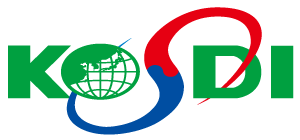



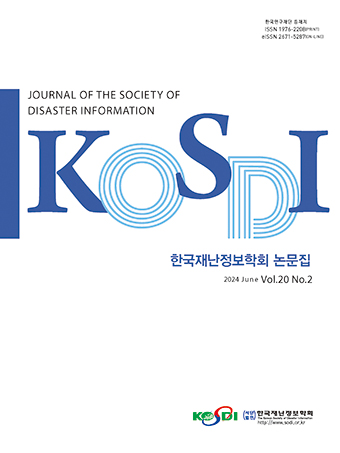 Journal of the Society of Disaster Information
Journal of the Society of Disaster Information
